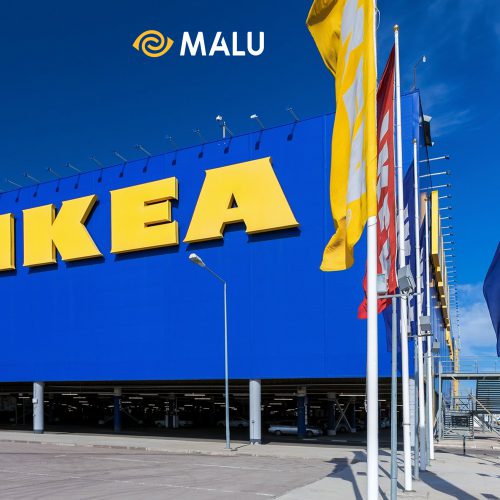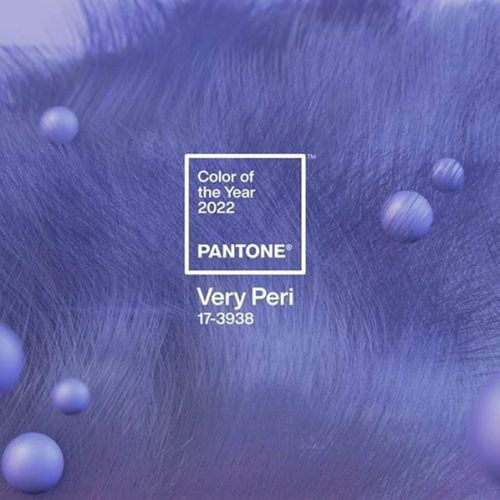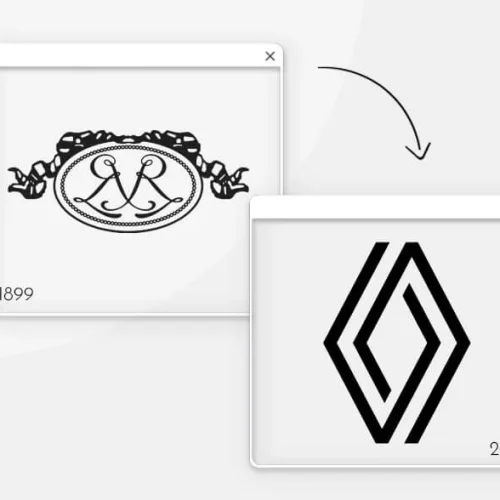CloseUp is currently one of the most famous toothpaste brands today, loved and trusted by customers. To achieve current success, CloseUp has implemented effective marketing strategies. Let’s analyze CloseUp’s Marketing strategy in detail in the article below.
Overview of CloseUp – Famous toothpaste brand in the world
According to Unilever Vietnam , established and put into operation in 1967, Closeup is a Gel toothpaste brand containing mouthwash extract and micro-fine whitening particles to provide long-lasting fresh breath and white teeth. innovation of Unilever group. The product is sold in Brazil, Asia and South Africa, along with other oral care brands. Closeup is positioned as a brand for young people.
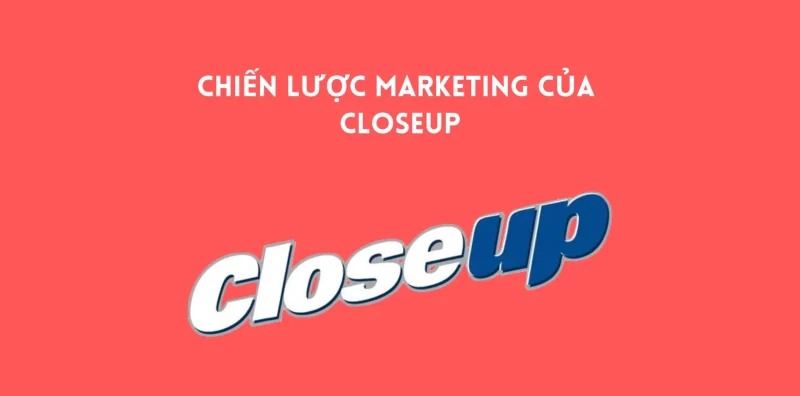
Closeup is the first gel toothpaste that gives customers a new choice when brushing their teeth with a line of transparent, shiny and colorful gels. With the greatest achievement of creating a completely different product segment, Closeup has been and will be a challenging brand in the toothpaste market.
In the context of other brands offering oral cavity protection and strong teeth, Closeup – with its unique gel form – offers beauty care benefits such as fresh breath, bright white teeth and healthy teeth. so confidence.
Unilever understands that when customers have fresh breath and white teeth, they will be more confident to overcome challenges in life. Whether it’s landing their dream job, finding someone they love, or simply getting closer to the person who matters most to them. So this group has provided a great portfolio of toothpastes with all the benefits: stronger, whiter, healthier teeth and extremely fresh breath.
Reality has proved:
- Closeup is a high-end brand with a youthful and strong brand image.
- Closeup is the world’s first Gel Toothpaste.
- Closeup is the first brand to collaborate with Jang Dong Gun in a series of television commercials.
- Closeup has organized many events for young people such as “Ice and Snow Festival”, “Century Valentine’s Night”, “Closeup Frestival”
CloseUp is a famous toothpaste brand not only in the domestic market but also a reputable toothpaste brand in the international market. Furthermore, the market share of CloseUp toothpaste brand accounts for 60% of the domestic toothpaste market in the country, Colgate – CloseUp’s largest competitor accounts for 30% of the market share, the remaining 10% is for ice cream brands. brush other teeth.
Therefore, Close’s ability to meet the needs of whipped cream is very large, providing enough for consumers’ needs. Although there are many other toothpaste brands on the market such as: Aquafresh, Colgate,… CloseUp always launches new products with many features to meet the needs and tastes of customers while also keeping market share and occupies 60% of the market share of other toothpaste brands in the market.
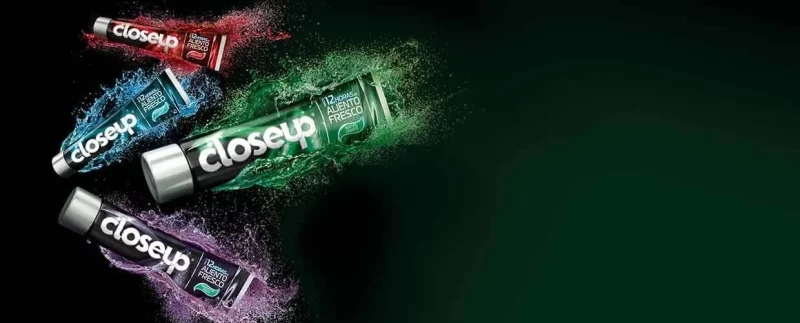
Detailed analysis of CloseUp’s Marketing Mix strategy
CloseUp is one of the famous toothpaste brands today in Vietnam and around the world. To achieve the current large market share, CloseUp has effectively deployed and applied Marketing Mix strategies according to the 4P model.
So what is CloseUp’s Marketing strategy ? How has CloseUp implemented Marketing Mix programs?
CloseUp’s Marketing Strategy for Products
Regarding CloseUp’s marketing strategy for products, this brand has a product differentiation strategy.
The product is designed to be different in characteristics from all other toothpaste products on the market. In addition to preventing tooth decay, CloseUp also brings fresh breath with many different fragrances.
CloseUp product with a breakthrough formula has the effect of giving fresh breath for a very long time, recognized by the International Dental Federation. The new toothpaste has been clinically tested to have the ability to give extremely long-lasting fresh breath, lasting many hours after brushing, helping to remove maximum dental plaque, reduce gingivitis, and improve breath.
CloseUp also contains fluorine compounds: the fluorine element will replace minerals for damaged tooth enamel, helping to inhibit the growth of plaque, sweeteners such as Xylitol significantly reduce tooth decay and the appearance of cavities. .
Besides, CloseUp also has the following outstanding features:
- About the brand: CloseUp has a name that is easy to remember, short, easy to remember, and easy to take to heart.
- Logo: Use compound words. The word “close” is white and the word “up” is blue. It is a combination of mint crystals and the color of sea water, bringing a cool, fragrant feeling.
- Slogan: “Fresh breath” Is an oral care product, mainly in the field of whitening teeth and giving fresh breath with mint flavor to help young people confidently get closer to each other.
- Packaging: Packaging is considered the 5th “P” after Product, Price, Place and PrOmotion, “Packaging is like a silent salesman”, so one thing must be recognized that the packaging of Close up products very prominent and eye-catching. Image of a smiling man and woman showing off their shiny white teeth.
- Design: CloseUp toothpaste is designed with paper boxes of 230g, 220g, 150g, convenient for use and carrying on long trips.
- A certain characteristic image of closeup toothpaste is the aesthetic tooth shape. The Closeup toothpaste product had to communicate that information differently so that it could not be confused with similar information from competitors.
- Typeface: Unique italic typeface helps distinguish other types of toothpaste products.
CloseUp’s Marketing Strategy in terms of price (Price)
Price is an equally important component in the Marketing mix including wholesale price, retail price, discounts, rebates, and credit. Price must be commensurate with the value received by customers and be competitive.
Regarding CloseUp’s Marketing strategy, this brand has used a market penetration pricing strategy (Penetration Pricing Strategy).
Penetration pricing is a marketing strategy used by businesses to attract customers to a new product or service by offering a low price compared to the market during the initial offering. Lower prices help a new product or service enter the market and attract customers from competitors. Market penetration pricing is based on the strategy of using a low initial price to attract more customers to a new product.
The goal of a market penetration pricing strategy is to entice customers to try a new product and gain more market share in the hope of keeping customers there when prices increase back to normal levels. Examples of this pricing strategy include online news websites offering a free month of service to customers who sign up or a bank offering a free account. for six months.
As for the market penetration pricing strategy, if applied effectively, it will be a marketing strategy that can help businesses increase market share and increase sales. Therefore, a higher number of products sold can lead to lower production costs and no problem of excess inventory. However, the key to a successful marketing campaign is still retaining new customers.
Read more details about other popular product pricing strategies in Marketing in the article : 10 popular product pricing strategies in marketing
Recognizing that 80% of Vietnamese consumers live in low-income rural areas, Unilever Vietnam has set a goal of reducing production costs to bring reasonable prices to consumers. The company has relied on local small businesses to find local ingredients to replace some that have to be imported; This both reduces purchasing costs and pays less import tax.
In addition, the company also distributes production and packaging for satellites in the North, Central, and South regions to reduce transportation and warehousing costs. Unilever has also implemented a financial support policy to help local businesses upgrade production equipment, transfer technology, and organize production training programs.
CloseUp hit the right consumer needs at that time: Consumers needed a good quality toothpaste, especially with high whitening ability, and at a moderate price.
CloseUp used a go-to-market product pricing strategy to attract customers. During the first 5 years, the company kept the selling price and quality unchanged even though the prices of other products of the same type increased due to the influence of raw material prices and increased gasoline prices. This pricing strategy helps CloseUp gradually gain high market share compared to its competitors.
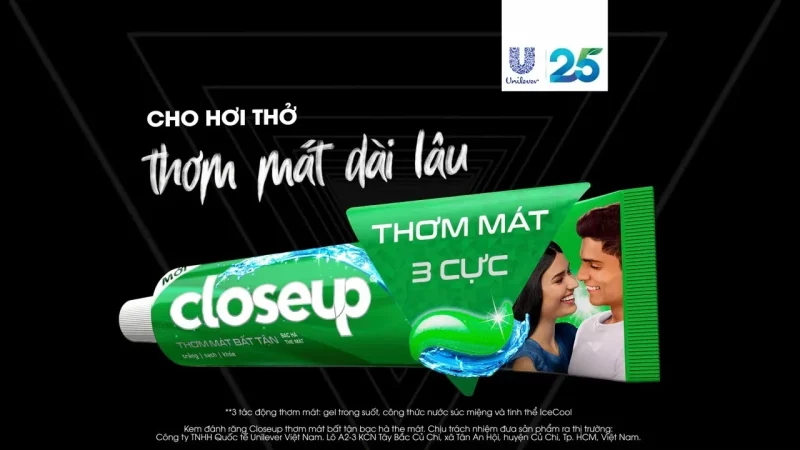
CloseUp’s Marketing Strategy on distribution system (Place)
For CloseUp’s marketing strategy regarding the distribution system (Place), this brand has expanded its distribution system to reach many potential customers.
Because the general consumption trend of Vietnamese people today is to get closer and closer to modern distribution channels such as supermarkets and buffet stores. Therefore, Unilever Vietnam has implemented a strategy to distribute its products through these retail channels.
Specifically, CloseUp products are sold at retail supermarkets such as Big C, Coop mart supermarket chain, Maximax system… These supermarkets distribute products directly to final consumers, by giving them to customers. Consumers choose their own favorite and suitable products and product lines. This distribution channel focuses on the final consumer, consuming in small quantities but regularly.
Unilever’s CloseUp toothpaste products are supplied in large quantities to retailers such as businesses, professional customers, and other branches that retail to consumers and then deliver them to consumers. final consumer. With this distribution channel, CloseUp’s product line is mainly aimed at retailers in large quantities.
Currently, Unilever Vietnam company has a distribution center that is considered the largest and most modern in Vietnam. This distribution center is located in Binh Duong with very scientific and modern equipment and operating layout. After being produced at the factory, goods will be gathered at this center, then transported to agents in the Central region (from Nha Trang onwards) and the Southern and Western regions, and this is also the Transit point for goods from Ho Chi Minh City to Unilever’s 2 distribution centers in Hanoi and Da Nang.
Thus, the distribution strategy is to expand the market, expand agents, and gradually increase the quantity and quality of distribution channels.
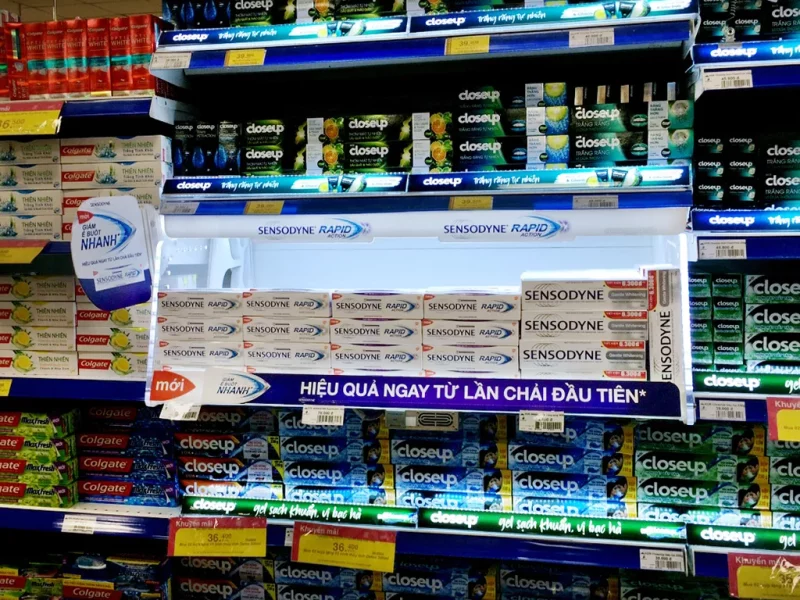
CloseUp’s Marketing Strategy on Mixed Promotion (Promotion)
When analyzing CloseUp’s Marketing strategy on mixed promotion (Promotion), this brand has focused on implementing advertising campaigns and organizing attractive promotions.
Advertisement
Advertising and public relations are the two most used tools throughout CloseUp’s product image positioning strategy. CloseUp is truly positioned on a new level. The product name “Close Up” means “close together”. Target customers are young people from 18 to 25 years old. They want to be more confident in front of everyone with the slogan “Confidence closer to each other”.
In particular, CloseUp’s television commercials are considered attractive, eye-catching, and highly effective. Surveys organized by the company on its advertising messages show that there are many good consumer responses to these submitted messages. Customers think that Close Up’s advertising messages are easy to understand and close to Vietnamese consumers. Especially the music pieces integrated into promotional videos are very interesting to young people.
In Vietnam, CloseUp has used many media channels to promote its products such as:
- Television: Close up advertising on almost all Vietnamese television channels such as: VTV3, VTV2, VTV1, HTV7, HTV9,..
- Newspapers: Close up advertising your products in newspapers with high circulation density and are quite popular such as: Tuoi Tre, Family Marketing, Laborer,…
- Outdoor advertising: CloseUp’s products are on electrical panels, signs, banners hanging on large buildings, bus stations,… with easily recognizable images and slogans “Extremely fresh, close together”.
A prominent advertising campaign of CloseUp must include: “Valentine 2014 – Engraved love on the Avenue of Love”.

Closeup has built a massive campaign around the idea: “Love needs a place to express” with the focus being the Avenue of Love – the first street in Vietnam with 99 locations for couples to fall in love. Each other made their fingerprints and engraved their names. Avenue of Love is located right in a “hot” location – next to Anh Sao Bridge (Phu My Hung, District 7), a familiar place for Saigon lovers.
Since the first information was officially announced in early January 2014, Avenue of Love has caused a stir in the young community. Articles about this unique path of love have attracted thousands of people. hundreds of thousands of likes and shares, along with countless comments on social networking sites.
The campaign has proven its great influence through more than 600,000 views on video clips calling for participation released before Valentine’s Day, with the participation of two program ambassadors, Rapper Tien Dat and Rapper Tien Dat. Hari Won.
Ending the campaign “Valentine 2014 – Carving love on the Avenue of Love” right on the night of love, CloseUp truly created an unforgettable mark in 2014. This is not only the opening event of the first Avenue of Love. in Vietnam but also an opportunity to honor the message “Let love lead the way”.
Promotion
CloseUp’s Marketing strategy is to organize attractive promotions to attract customers.
- Product discounts
- Donate goods
- Free movie tickets
- Discount code, gift voucher
Summary
CloseUp is currently one of the most famous toothpaste brands today, loved and trusted by customers. To achieve current success, CloseUp has implemented effective marketing strategies.
Regarding CloseUp’s marketing strategy regarding products, this brand has focused on diversifying its product portfolio as well as improving the quality of its products. Besides, the market penetration pricing strategy is also an effective pricing strategy for CloseUp. With creative advertising campaigns and a widespread distribution system, CloseUp has also succeeded in attracting customers and bringing its products to customers in the most convenient way.
Check out some other great content:
- Detailed analysis of Aquafina’s Marketing strategy
- Analyze Unilever’s Marketing Mix strategy
- Detailed analysis of Innisfree’s Marketing strategy

